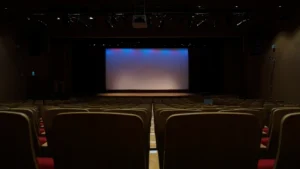Smile, you’re on camera
This archived article was written by:
According to Associate Vice Chancellor Eric Mantz, about 50 security cameras are installed around the USU Eastern campus. They serve a dual purpose of crime deterrents and capturing footage to help in police investigations.
The cameras were installed in 2009 thanks to capitol improvement funds from the Utah State Building Board. They are high-resolution cameras that record motion. The cameras do not record an empty campus, they are only activated when something moves. The information is stored digitally and old footage is erased as new footage comes in, during a time with a lot of motion to be recorded the footage would be saved for approximately 10 days unless it is moved to a permanent location.
The cameras are monitored by the USU Eastern Police department.
Periodically they are checked to make sure they are functional, and footage is reviewed when a crime occurs on campus. Associate professor of Criminal Justice, Scott Henrie, notes that having these cameras on campus “helps to create an environment where faculty, staff and students can feel safe.” Henrie also adds that if the cameras deter criminal acts or help law enforcement in one major case, they are worth the investment to the school.
Mantz estimates that useful video footage is turned over to police in about 50% of criminal incidents on campus. The cameras are meant to be used as tools by police. Only campus police have access to the live video stream. Along with other investigative techniques, video footage can help identify or confirm suspects during crimes. With many cameras placed near doorways, it makes it easier to identify faces.
The locations of all the security cameras are not released to the general public. This helps deter criminal acts because while some cameras are clearly visible, others are discrete. Mischievous students and other potential law-breakers should feel that anywhere they are on campus, there could be video surveillance.
It is a delicate balancing act to increase safety on campus while not over stepping the bounds of individual privacy. Mantz points out that the administration does not want students to feel their privacy is being invaded or that “big brother” is watching them. In order to protect students’ right to privacy, there are no cameras in restrooms or residence halls. Campus law enforcement has no interest in whether or not someone is picking their nose, and they don’t listen in on personal conversations. The video footage is only reviewed in relation to increasing safety on campus.
Although having security cameras on campus can help deter criminal activity, especially when it is widely known that there is a digital surveillance system, the current system might benefit from an update. So much about technology has changed since their installation in 2009. Some of the cameras on campus are in disadvantageous locations, says Henrie. A camera which is blocked by a tree or facing the wrong direction will not serve much purpose in the event of a crime. Henrie knows that a functioning security system is a huge asset to the campus and should be maintained like every other safety measure.
In the future, if the security cameras are updated, it will require much research and planning to ensure that USU Eastern’s campus is getting the most out of their investment. Ultimately it is up to the USU Eastern Police Department to decide what steps must be taken to best protect students’ safety and property. They not only rely on security camera footage, but law abiding students, good citizens who take action to stop violence, theft, or vandalism when they see it, and of course, all other investigative skills and police training that help them keep USU Eastern a safe place.




